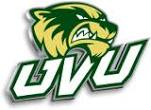What do they do?
Set up, operate, or tend wood sawing machines. May operate computer numerically controlled (CNC) equipment. Includes lead sawyers.
Also known as:
Backup Sawyer, Band Saw Operator, Bandmill Operator, Chop Saw Operator, Curve Saw Operator, Cut Off Saw Operator, Debarker Operator, Edgerman, Knot Saw Operator, Panel Saw Operator, Planer, Resaw Operator, Rip Saw Operator, Saw Operator, Sawyer, Trim Saw Operator, Utility Operator
-
2.8%
Change
Ranks #36 in job growth rate120Job Openings
Ranks #26 in net job growth
-
Hennepin Technical College
Brooklyn Park, MN
-
Lee College
Baytown, TX
-
Thaddeus Stevens College of Technology
Lancaster, PA
-
Michigan Career and Technical Institute
Plainwell, MI
-
Berks Career & Technology Center
Leesport, PA
Looking for colleges that offer a specific major? Use the College Match Tool to find your best-matched schools and discover your estimated Net Price!
- Doctorate or Professional Degree (<1%)
- Master's degree (<1%)
- Bachelor's degree (4%)
- Associate's degree (4%)
- Some college, no degree (14%)
- High school diploma equivalent (46%)
- Less than high school diploma (32%)
People in this career often have talent in:
- Control Precision - The ability to quickly and repeatedly adjust the controls of a machine or a vehicle to exact positions.
- Arm-Hand Steadiness - The ability to keep your hand and arm steady while moving your arm or while holding your arm and hand in one position.
- Manual Dexterity - The ability to quickly move your hand, your hand together with your arm, or your two hands to grasp, manipulate, or assemble objects.
- Near Vision - The ability to see details at close range (within a few feet of the observer).
People in this career often do these activities:
- Measure dimensions of completed products or workpieces to verify conformance to specifications.
- Set equipment controls to meet cutting specifications.
- Mount attachments or tools onto production equipment.
- Set equipment guides, stops, spacers, or other fixtures.
- Inspect lumber or raw woodstock.
- Trim excess material from workpieces.
- Monitor equipment operation to ensure proper functioning.
- Clear equipment jams.
- Sharpen cutting or grinding tools.
- Replace worn equipment components.
- Count finished products or workpieces.
- Sort materials or products for processing, storing, shipping, or grading.
- Stack finished items for further processing or shipment.
- Maneuver workpieces in equipment during production.
- Operate cutting equipment.
- Mount materials or workpieces onto production equipment.
- Position raw materials on processing or production equipment.
- Lift materials or workpieces using cranes or other lifting equipment.
- Measure materials to mark reference points, cutting lines, or other indicators.
- Operate woodworking equipment.
- Read work orders or other instructions to determine product specifications or materials requirements.
- Study blueprints or other instructions to determine equipment setup requirements.
- Review blueprints or other instructions to determine operational methods or sequences.
- Select production input materials.
- Select production equipment according to product specifications.
- Shape metal workpieces with hammers or other small hand tools.
- Cut industrial materials in preparation for fabrication or processing.
- Remove products or workpieces from production equipment.
- Clean production equipment.
- Lubricate production equipment.
- Dispose of trash or waste materials.
This page includes data from:

 Occupation statistics: USDOL U.S. Bureau of Labor Statistics Occupational Employment Statistics
Occupation statistics: USDOL U.S. Bureau of Labor Statistics Occupational Employment Statistics
 Videos: CareerOneStop, USDOL/ETA and the Minnesota Department of Employment & Economic Development
Videos: CareerOneStop, USDOL/ETA and the Minnesota Department of Employment & Economic Development





